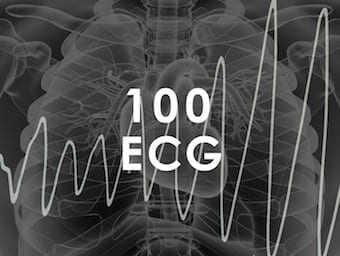
ECG Case 131
An 88-year-old man with palpitations and a HR fixed at 150. This is not flutter or AVNRT -- can you explain why?

An 88-year-old man with palpitations and a HR fixed at 150. This is not flutter or AVNRT -- can you explain why?

Yet another ED patient with SVT -- but there is one feature on this ECG that suggests a congenital structural abnormality, can you spot it?

A man in his 40s with exertional chest pain and a small troponin rise. Is this just LVH? Bedside echo gives us the answer

There are five features on this "normal" ECG that suggest impending inferior STEMI - can you spot them?

Can ST depression and T wave inversion in aVL be normal? Can BER cause reciprocal changes? Learn about using the QRS-T wave angle to answer these questions

A man in his 40s is brought in GCS 3. Can you interpret these ECG and echo abnormalities to appropriately guide management?

With worked examples in the next three posts, we look at ways to recognise early ECG features of OMI before waiting for a "STEMI" to evolve

A 24-year-old female presents following a syncopal episode. This case incorporates basic bedside echo into our ED work-up of syncope.

A 78-year-old man presents following a self-resolved episode of right axillary pain. Add this characteristic ECG pattern to your list of spot diagnoses.

With a great case example, we discuss diagnosing OMI in the presence of intraventricular conduction delay and/or prior anterior myocardial infarction

This characteristic ECG pattern should be in every critical care practitioner's knowledge base as a STEMI-equivalent, regardless of the magnitude of ST-segment changes seen

Can you predict this patient's potassium? Patients with this syndrome may not exhibit the typical ECG features of hyperkalaemia beyond bradycardia